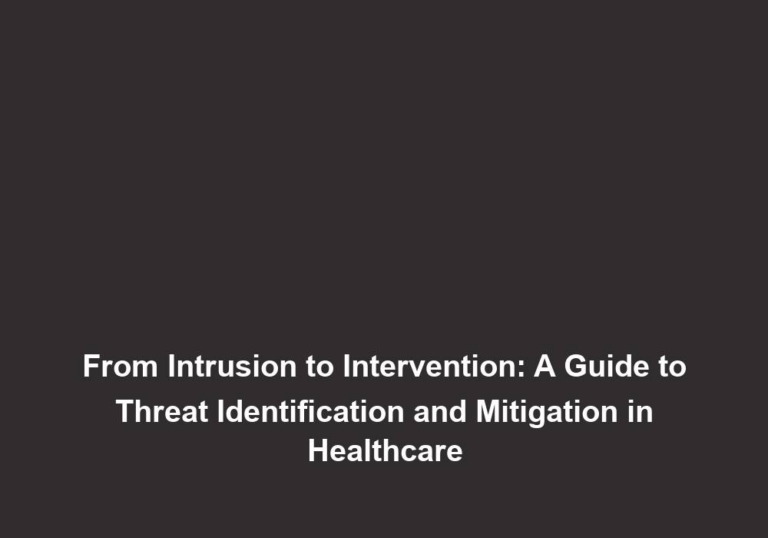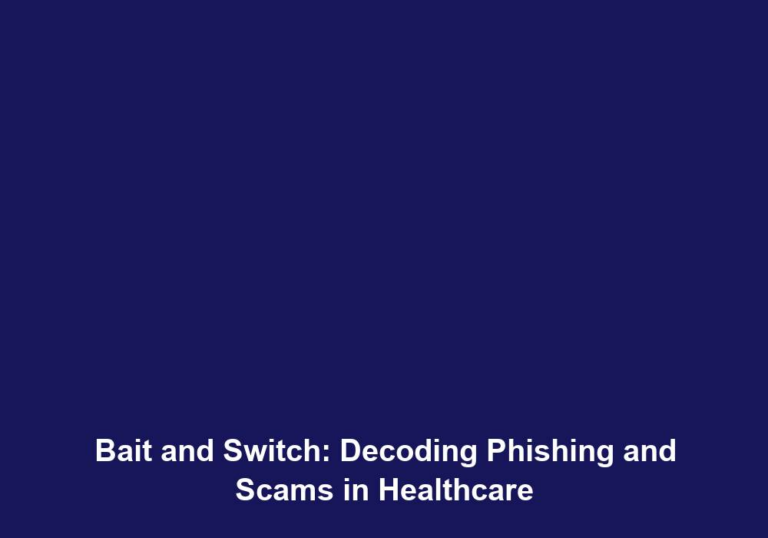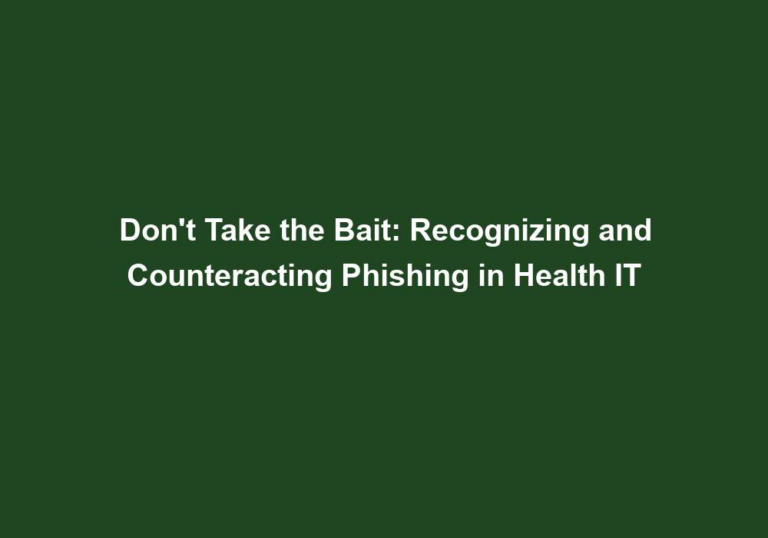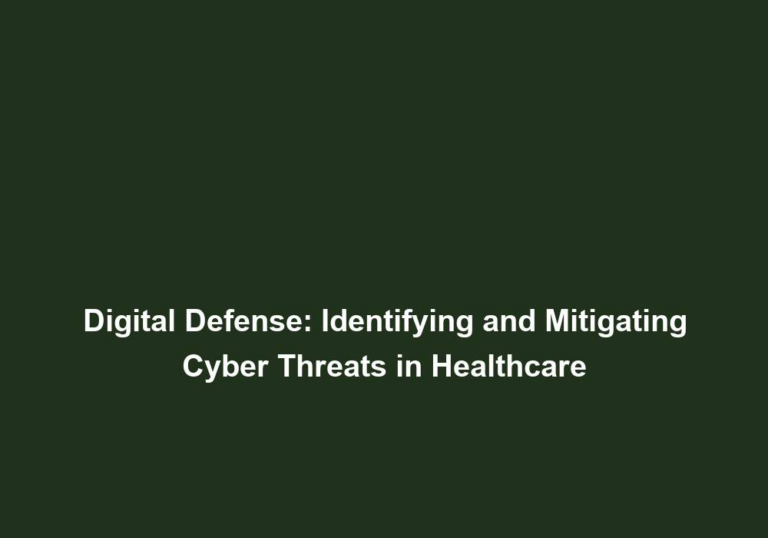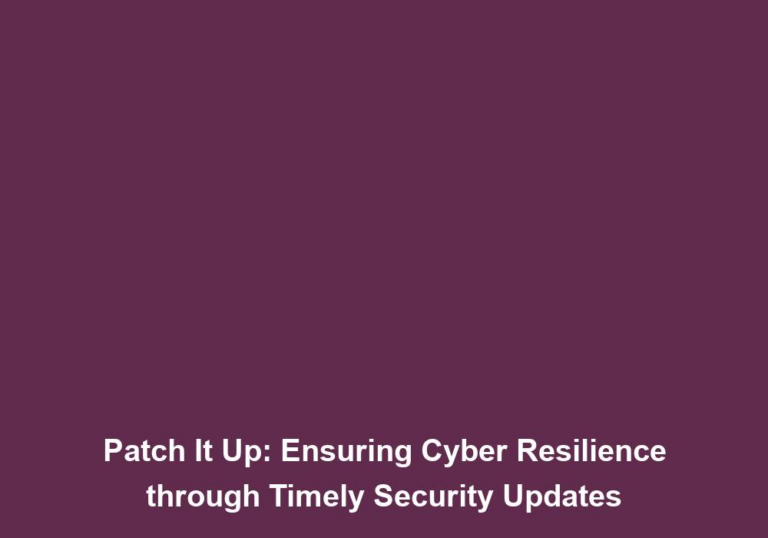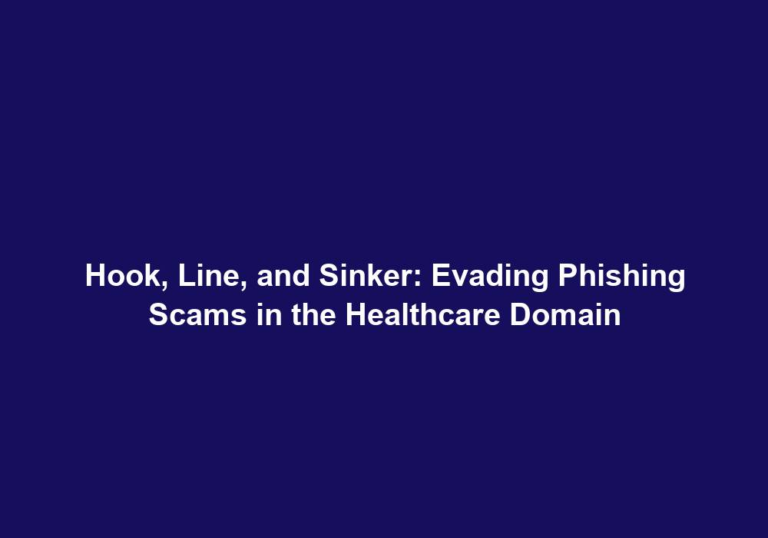Patch It Up: Ensuring Cyber Resilience through Timely Security Updates
In today’s digital landscape, where cyber threats are becoming increasingly sophisticated, organizations must prioritize cybersecurity and take proactive measures to ensure the protection of their valuable data and sensitive information. One crucial aspect of maintaining a robust security posture is the timely implementation of security patches and updates. By patching vulnerabilities in software and systems promptly, businesses can significantly enhance their cyber resilience and minimize the risk of security breaches. This article explores the importance of security updates, the potential consequences of neglecting them, and provides practical tips for ensuring effective patch management.
The Significance of Security Updates
Security updates, or patches, are software code modifications developed by software vendors to address vulnerabilities and bugs discovered in their products. These vulnerabilities can be exploited by malicious actors to gain unauthorized access, steal sensitive data, or disrupt essential services. The primary purpose of security updates is to fix these vulnerabilities and enhance the overall security of the software or system.
1. Protecting Against Exploits and Cyber Attacks
In today’s rapidly evolving cyber threat landscape, new vulnerabilities are constantly being discovered. Software vendors release security updates to address these vulnerabilities and protect users from potential exploits. These updates patch the vulnerabilities and close the door for cybercriminals to penetrate systems and networks. Failure to apply these updates promptly leaves organizations exposed to a wide range of cyber attacks, including malware infections, data breaches, ransomware attacks, and more. By regularly patching their systems, businesses can reduce their attack surface and significantly mitigate the risk of falling victim to these threats.
2. Maintaining Compliance with Regulations
Many industries have specific regulations and compliance standards that organizations must adhere to. These regulations often require businesses to implement security controls and stay up to date with the latest security patches. Failure to comply with these regulations can result in severe penalties, reputational damage, and legal consequences. By ensuring timely security updates, organizations can demonstrate their commitment to maintaining a secure environment and meet their regulatory obligations. Regularly applying security patches helps organizations stay in compliance and avoid costly penalties and legal actions.
3. Strengthening Overall Cyber Resilience
A proactive approach to security updates plays a vital role in enhancing an organization’s cyber resilience. Cyber resilience refers to an organization’s ability to prevent, detect, respond to, and recover from cyber threats. By regularly patching vulnerabilities, businesses can minimize the likelihood of successful cyber attacks and reduce the impact of potential security breaches. Timely security updates contribute to building this resilience by fortifying defenses and minimizing potential vulnerabilities. It is essential to view patch management as a critical component of an organization’s overall cybersecurity strategy.
Consequences of Neglecting Security Updates
Failing to prioritize security updates can have severe consequences for businesses. Here are some of the potential risks and negative impacts associated with neglecting timely patching:
1. Increased Vulnerability to Cyber Attacks
Outdated software and systems present attractive targets for cybercriminals. They actively search for unpatched vulnerabilities that can be exploited to gain unauthorized access or compromise sensitive data. Neglecting security updates increases the vulnerability of an organization’s infrastructure, making it an easy target for malicious actors. By not promptly applying security patches, businesses expose themselves to unnecessary risks and potential security breaches.
2. Data Breaches and Loss of Intellectual Property
Data breaches can have devastating consequences. They can result in the loss or theft of sensitive customer information, trade secrets, intellectual property, and financial data. Failing to implement security updates promptly significantly increases the risk of experiencing a data breach, potentially leading to severe financial losses, legal liabilities, and irreparable damage to an organization’s reputation. The impact of a data breach goes beyond financial losses, as it can also lead to a loss of trust from customers and partners.
3. Operational Disruptions and Downtime
In addition to compromising data and privacy, cyber attacks can also disrupt critical business operations. Ransomware attacks, for instance, can encrypt an organization’s data and render systems inaccessible until a ransom is paid. By neglecting security updates, businesses expose themselves to such attacks, risking significant operational disruptions, prolonged downtime, and financial losses. The cost of recovering from a cyber attack and restoring operations can be significantly higher than the cost of regular patch management practices.
Best Practices for Effective Patch Management
To ensure cyber resilience and protect against potential threats, organizations should follow these best practices for effective patch management:
1. Establish a Patch Management Policy
Developing a comprehensive patch management policy is essential for maintaining a structured approach to security updates. The policy should outline clear guidelines, responsibilities, and procedures for identifying, testing, and deploying patches across the organization’s systems and software. It should also define the frequency and urgency of patching based on risk assessments and industry best practices. By establishing a policy, organizations can ensure consistency and accountability in their patch management processes.
2. Regularly Monitor Vendor Releases and Security Bulletins
Staying informed about the latest security updates and patches released by software vendors is critical. Organizations should proactively monitor vendor websites, subscribe to security bulletins, or join relevant mailing lists to receive timely notifications about new patches. This ensures that businesses are aware of vulnerabilities and can take quick action to address them. By staying up to date with vendor releases, organizations can stay ahead of potential threats and prioritize the most critical patches.
3. Test Patches in a Controlled Environment
Before deploying patches across all systems, it is crucial to test them in a controlled environment. This allows organizations to assess the compatibility and potential impact of patches on their software and systems. Testing helps identify any conflicts or issues that may arise from the deployment of specific patches, allowing businesses to mitigate any potential adverse effects. By testing patches before deployment, organizations can minimize the risk of system failures or disruptions caused by incompatible updates.
4. Prioritize Critical Patches and Vulnerabilities
Not all patches are created equal. Some patches address critical vulnerabilities that pose a high risk to an organization’s security, while others may be less urgent. It is essential to prioritize critical patches based on their severity and exploitability. By focusing on the most critical vulnerabilities first, organizations can effectively allocate resources and protect against the most significant threats. Prioritization helps organizations make informed decisions about patch deployment and ensure that critical vulnerabilities are addressed promptly.
5. Automate Patch Deployment Processes
Manual patching processes can be time-consuming, prone to errors, and delay critical updates. Implementing automated patch management solutions can streamline the process, ensuring consistent and timely deployment across all systems. Automation reduces the risk of human error, minimizes patch deployment time, and allows IT teams to focus on more strategic security tasks. By automating patch deployment processes, organizations can ensure that patches are applied promptly and efficiently across their entire infrastructure.
6. Regularly Audit and Update System Inventories
Maintaining an accurate system inventory is essential for effective patch management. Organizations should regularly conduct audits to identify all software, systems, and devices within their network. This inventory helps ensure that no critical systems are overlooked during the patching process, reducing the risk of security gaps due to missing updates. By maintaining an up-to-date system inventory, organizations can efficiently track and manage the patching process and ensure comprehensive coverage.
7. Maintain Backup and Disaster Recovery Plans
While security updates significantly reduce the risk of cyber attacks, organizations should be prepared for worst-case scenarios. Implementing robust backup and disaster recovery plans ensures that data can be restored in the event of a successful breach or system compromise. Regularly test backups and verify their integrity to guarantee a swift recovery if necessary. Backup and disaster recovery plans are crucial components of an organization’s cybersecurity strategy and provide an additional layer of protection against potential threats.
In conclusion, maintaining cyber resilience in the face of evolving cyber threats requires organizations to prioritize timely security updates. Neglecting these updates can leave businesses vulnerable to cyber attacks, data breaches, and operational disruptions. By following best practices for patch management, including establishing clear policies, regularly monitoring vendor releases, and automating updates, organizations can significantly enhance their security posture and minimize the risk of falling victim to malicious actors. Remember, timely patching is not an option but a necessity to safeguard valuable assets and ensure a robust defense against cyber threats.


